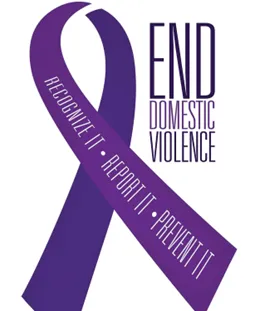
Understanding Domestic Violence
Understanding Domestic Violence: Knowledge is Power

Every 24 seconds in the United States, someone experiences domestic violence. This October, during Domestic Violence Awareness Month, we focus on building understanding that can help create safer communities for everyone. While the statistics are sobering – with one in three women and one in four men experiencing physical violence by an intimate partner – knowledge and awareness are powerful tools for change.
The Many Faces of Domestic Violence
Domestic violence reaches across all boundaries of age, gender, race, religion, nationality, and economic status. It affects our neighbors, colleagues, friends, and family members, often hidden behind closed doors. Understanding its many forms helps us recognize when someone might need support. Physical violence is just one form of abuse. Emotional abuse might include constant criticism, humiliation, or manipulation. Financial abuse could involve controlling access to money, preventing someone from working, or damaging their credit. Digital abuse might mean monitoring someone's phone, demanding social media passwords, or using technology to track their location.
Understanding Power and Control
At its core, domestic violence is about power and control. Abusive behavior often starts subtly and escalates over time, making it difficult for those experiencing it to recognize the progression. An abusive partner might initially present their controlling behavior as care or concern – checking phone messages because they "worry," managing finances because they're "better with money," or limiting social connections because they "love spending time together." Understanding these dynamics helps us recognize how abuse can develop gradually, making it harder for someone to identify what's happening or seek help.
Impact on Children and Families
When we discuss domestic violence, we must understand its ripple effects through families and generations. One in fifteen children witnesses domestic violence each year, potentially shaping their understanding of relationships and safety. Children exposed to violence might experience anxiety, depression, or difficulties in school. They might struggle with relationships or have trouble expressing emotions in healthy ways. However, with proper support and positive role models, children can heal and learn healthy relationship patterns.
Warning Signs and Risk Factors
Understanding the warning signs of domestic violence can help us recognize when someone needs support. Early warning signs might include a partner who shows extreme jealousy, makes all the decisions, or isolates their partner from friends and family. They might blame their partner for their own abusive behavior or have unpredictable mood swings. Financial control, constant criticism, and threats are other common signs that a relationship might be abusive.
Barriers to Leaving
Many people wonder why someone would stay in an abusive relationship. The reality is that leaving often involves navigating complex practical and emotional barriers. Someone might face threats to their safety if they leave, lack financial resources to support themselves or their children, fear losing custody of their children, or face pressure from family or religious communities to stay. Understanding these barriers helps us provide more meaningful support rather than judgment.

Breaking the Silence
One of the most powerful tools against domestic violence is breaking the silence that surrounds it. When we talk openly about domestic violence, we help survivors understand they're not alone and that help is available. Open discussions can also help prevent abuse by teaching young people about healthy relationships and challenging attitudes that normalize violence.
Understanding Healthy Relationships
To prevent domestic violence, it's crucial to understand what makes a healthy relationship. Healthy relationships involve:
Mutual respect and support
Open and honest communication
Trust and independence
Shared decision-making
Respect for boundaries
Financial partnership
Physical and emotional safety
Supporting Survivors
When someone discloses abuse, our response can make a crucial difference. The most important things we can do are listen without judgment, believe their experience, and respect their choices. Survivors often face complex decisions, and pressuring them to take specific actions can be counterproductive. Instead, we can offer support, share resources, and let them know we care about their safety.
Taking Action This October

Join us this month in making a difference:
Educate yourself about domestic violence and share this knowledge with others. Understanding leads to better support for survivors.
On October 17th (Purple Thursday), wear purple to show solidarity with survivors and start conversations about domestic violence in your community.
Contact Lafayette House to learn about volunteer opportunities or ways to support our mission. Whether through direct service or supporting our Second Chances Thrift Store, every contribution helps create safer communities.
Contact Information:

Crisis Line: 1 (800) 416-1772
Main Office: 1 (417) 782-1772
Main Office Address: 1809 S Connor Ave. Joplin, Missouri 64804
Neosho Office: 417-451-6106
Neosho Office: 118 W. Spring St., Neosho, MO, 64850
Website: https://lafayettehouse.org/
Remember, at Lafayette House, our doors are always open, providing sanctuary and support to those seeking safety and healing. Together, we can work toward a future free from domestic violence.